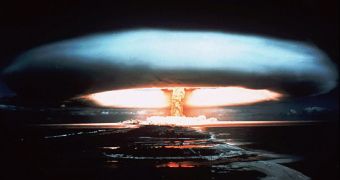They might have been frowned upon in their heydays, but nuclear bomb tests have high chances of proving their usefulness by helping conservationists put a dent in an industry that threatens to destroy biodiversity: the illegal trade in animal body parts.
University of Utah scientists explain that killing elephants and rhinos in order to get their tusks and horns has not always been illegal.
Because of this, traffickers sometimes don't get punished when caught transporting such animal body parts because there is no way of telling whether the animals were killed before or after bans on poaching activities were instituted.
The researchers maintain that, with the help of nuclear bomb tests carried out decades ago, conservationists and authorities will soon be able to determine the year an animal died.
This will allow them to figure out whether or not its tusk or its horn was collected illegally by the people who own it or wish to sell it.
The nuclear bomb tests that were carried out in Nevada and Siberia between the years 1952-1962 saturated the atmosphere with a chemical compound named carbon-14.
Carbon-14 naturally forms in our atmosphere whenever cosmic rays come into contact with nitrogen.
Atmospheric concentrations of this chemical compound upped to a considerable extent when neutrons released by the nuclear bomb tests bombarded whatever nitrogen they came across, and have been steadily declining ever since the US and Russia stopped carrying out such tests.
The carbon-14 was absorbed by the bodies of rhinos and elephants living in those days, and could therefore help authorities date the ivory and rhino horn seizures that they chance to make.
Long story short: animal body parts rich in carbon-14 are likely to have been collected before international bans on poaching were passed, and those with a very low carbon-14 content must have been poached.
“The dating method is affordable and accessible to government and law enforcement agencies. It has immediate applications to fighting the illegal sale and trade of ivory that has led to the highest rate of poaching seen in decades,” geochemist Kevin Uno explains.
“This could be used in specific cases of ivory seizures to determine when the ivory was obtained and thus whether it is legal,” researcher Thure Cerling wishes to stress.

 14 DAY TRIAL //
14 DAY TRIAL //